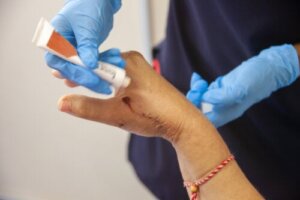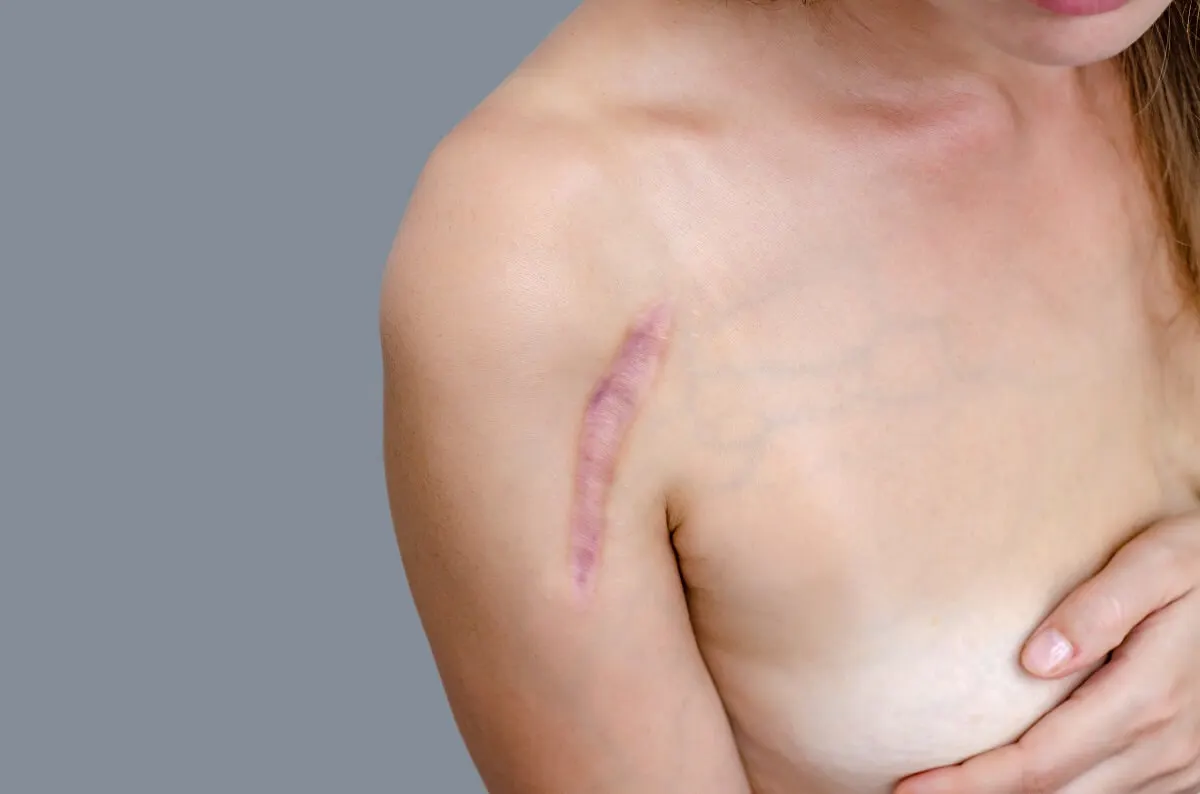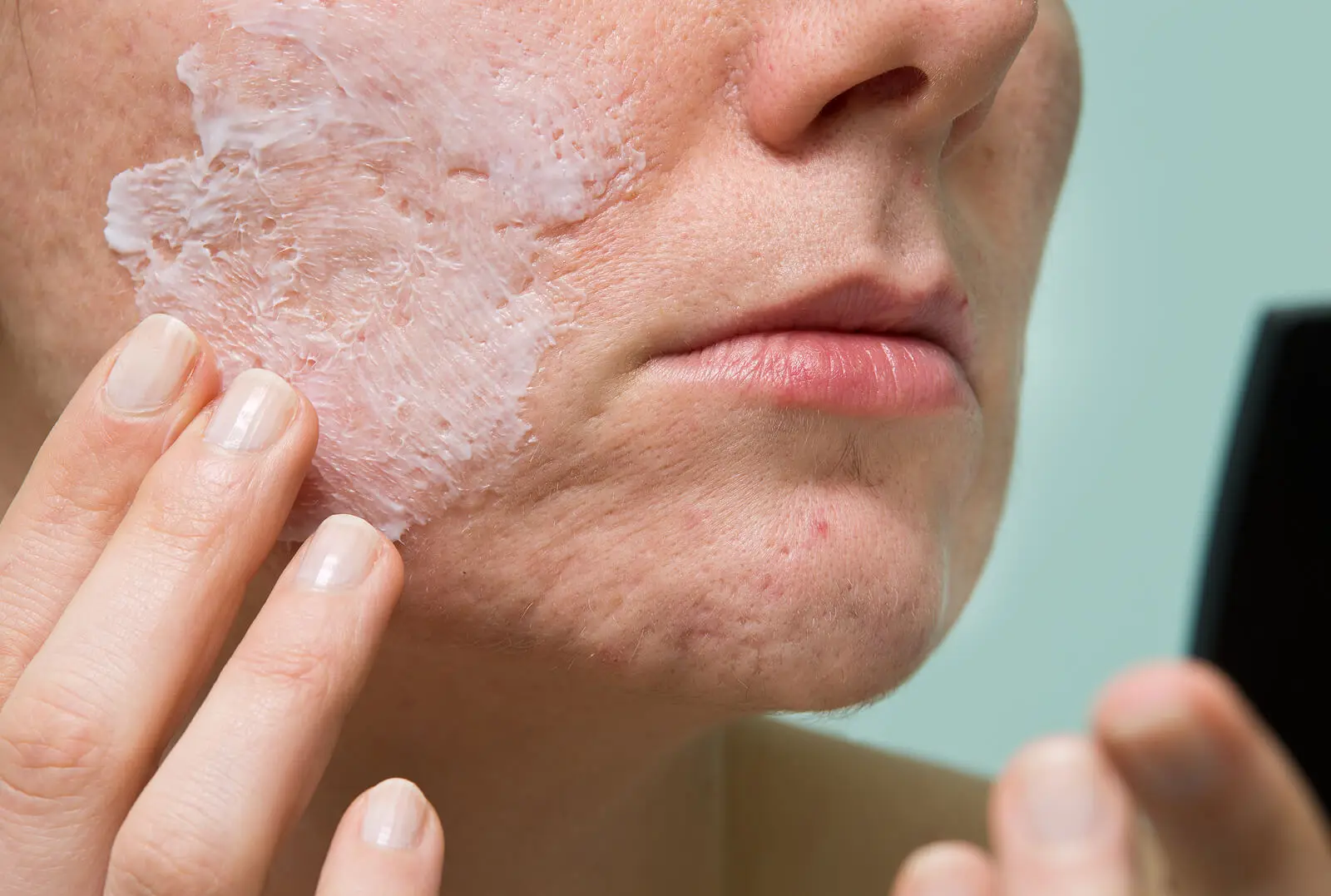Most Commonly Used Types of Healing Creams and Ointments

There are different types of healing creams and ointments, which are used both to accelerate the process and to prevent marks that affect the skin from an aesthetic point of view. They usually include compounds such as antibiotics, silicone, and collagen, among others.
In this way, they help prevent infections, moisturize and intervene in the regeneration of tissues. There’s also the possibility of applying some ingredients of natural origin, such as aloe vera, for example. Which are the most recommended?
Wound healing
As soon as a wound occurs, the healing process begins immediately, and it starts to heal, repair, and regenerate the tissue. This, in turn, is composed of several sub-processes or stages, which encompass the following:
- Inflammation: During this phase, the body fights the infection. The immune system’s defenses act by phagocytizing the dirt and bacteria that may have penetrated the skin.
- Coagulation cascade: At this time, the blood becomes viscous to form clots and prevent further leakage.
- Epithelialization: New tissue begins to form, reducing the wound margins.
- Maturation: In this new tissue, collagen fibers align, organize and interconnect to give the appearance of skin.
- Remodeling: The blood vessels that appeared to heal the injury are eliminated, so that the skin no longer looks reddened.

You may also be interested in: Coagulation Problems: How does Coagulation Work?
Healing creams and ointments: what are they and what are they used for?
It’s important to note that there are different types of scarring, since not all wounds are the same. The smaller the wound, the faster it heals and the fewer marks are left. But if it’s very large, the new tissue will be bigger and you’ll be able to notice the difference. On the other hand, different factors can also affect the process, as there are different types of skin. Even in the same person, the skin in the elbow area isn’t the same as the skin on the face. Other things that influence are the following:
- Age
- Nutrition
- Hydration
- Possible infections
- Pathologies (diabetes, cardiovascular disease, etc.)
- Medications (corticosteroids)
- Smoking
Accordingly, on some occasions, the results may not be satisfactory, as permanent marks can remain on the skin, in the form of atrophic, hypertrophic or keloid scars.
It’s possible to treat these cases and even prevent them. Thus, when risk factors are known to be present, products such as healing creams and ointments can be used. Their composition includes different active ingredients, which we’ll learn about later.
These are applied to accelerate skin regeneration when there are wounds, burns, or pressure ulcers. They can also provide the following benefits:
- Preventing infections
- Reducing inflammation
- Decreasing sensitivity and redness
- Preventing the final appearance from being unaesthetic
Different types of healing creams and ointments
The healing creams and ointments that we’ll now mention, even those that include natural ingredients, should be used under the guidance of an expert, because they don’t produce the same effects in all types of wounds or skin.
Neomycin and clostebol
Neomycin is an antibiotic that is often used on the skin to prevent or treat infections caused by bacteria. However, it isn’t effective against viral or herpes infections.
Neomycin sulfate can be found as the main ingredient in wound healing creams and ointments, in which there are other compounds such as clostebol acetate. This is a synthetic anabolic-androgenic steroid, derived from testosterone.
Thus, in addition to its antibacterial action, it has anti-inflammatory potential. Therefore, its use is often suggested for the healing of skin wounds caused by the following:
- Ulcers
- Fissures
- Burns
2. Neomycin, bacitracin, and polymyxin B
The aforementioned neomycin sulfate is also found in healing creams and ointments, together with bacitracin and polymyxin B, both antibiotics.
As is known, bacitracin is of a peptide nature, and is used in topical infections. Polymyxin B has a broad bactericidal action against almost all gram-negative bacteria.
Thus, the product inhibits the growth of pathogens and is recommended to aid in wound healing, especially when the wounds are infected, whether or not they have pus.
3. Deoxymethasone
After antibiotics, the most commonly used creams to treat wounds are the wound-healing creams themselves. These have anti-inflammatory action and promote skin regeneration.
Dexamethasone can be mentioned in this regard. It’s a topical corticosteroid of synthetic origin, used to reduce both inflammation and skin itching.
It’s applied to aid in the healing of burn wounds, peeling, cracking of the skin, and blisters, even when there’s psoriasis or dermatitis.
4. Copper and zinc sulfate
Copper zinc sulfate is a healing cream that can contribute to the healing process in wounds and skin ulcers. It’s also useful for eczema, dermatitis, psoriasis, and acne.
In fact, it’s recommended to apply it after skin treatments, such as peeling. It moisturizes and repairs, while protecting against infections, as it has an antibacterial effect.
5. Silver sulfadiazine
There are other ointments with a healing action whose main component is silver sulfadiazine. This is a sulfonamide with antibacterial action that’s used to treat second and third-degree burns
It helps prevent infections. It’s even recommended in cases of surgical scars, ulcers, and bedsores; it also has anti-inflammatory properties.
6. Dexpanthenol
As its name suggests, it contains panthenol (provitamin B5). Because of this, it can contribute to the regeneration process of skin cells, which improves healing.
It’s also moisturizing. Therefore, it helps to combat diaper rash, dryness, and cracking of the skin, as well as possible sequelae of tattoos.
7. Fibrinolysin
This is an enzyme derived from plasma; it can be of bovine origin or cultured from certain bacteria. It’s believed to be able to destroy dead cells in infected or inflamed wounds, including surgical scars.
However, it shouldn’t be used alone, but in conjunction with deoxyribonuclease. Moreover, this product also contains chloramphenicol, which is an antibiotic.
8. Collagenase
Collagenase is an enzyme (metalloproteinase), which can break the peptide bonds of collagens. Therefore, it allows the removal of dead skin cells in wounds, from ulcers and bedsores to gangrene. Thus, it promotes cleansing and facilitates healing.
9. Silicone
Hydration is also important in wound healing processes. In this order of ideas, creams and healing ointments with silicone help to moisturize and regenerate the skin to improve the healing
They are indicated to treat various types of post-surgical scars, as well as burns or skin wounds caused by trauma or blows. Incidentally, they prevent the formation of keloids. It can only be used on already closed wounds or after the removal of surgical stitches, in cases of surgery.
Read more here: How to Prevent a Wound from Becoming Infected
10. Centella asiatica with neomycin
In addition to the compounds we have seen, there are also healing products with natural ingredients, either totally natural or combined with some drugs. Such is the case with Centella asiatica with neomycin.
This cream helps to incorporate and fix collagen to stimulate the granulation process and facilitate epithelization. In addition, due to its antibiotic content, it protects from the danger of contamination or allows to treat already-infected processes.
It’s used in different types of wounds (ulcers, sores, bedsores), and also in burns, eczema, and surgical wounds. It even helps with the fixation of skin grafts.

11. Castor oil with balsam of Peru
Another alternative are the healing medicines that include castor oil with balsam of Peru in their composition. It seems to stimulate blood flow and can be applied with dressings.
According to the results of research conducted on patients who received skin grafts, the use of an ointment with castor oil, Peru balsam, and trypsin had positive effects, since it helped epithelialization in an average of 8 days, with no complications observed in the wound.
12. Homemade healing ointments
There are some remedies of natural origin whose properties favor the healing process. Some of the most popular are the following:
- Persicaria: This has healing and anti-inflammatory qualities. In addition, it reduces pain in wounds.
- Aloe vera: This has wide and well-known healing benefits. It also has moisturizing, analgesic, and antiseptic properties.
- Chamomile: It helps heal wounds and eczema, and is also anti-allergic.
- Rosemary: Anti-inflammatory and antiseptic; its essential oil is antibacterial and fungicidal.
These ingredients are often used in the manufacture of ointments, salves, homemade ointments, and other healing products. However, they should be used as a complement and always in consultation with a physician.
Healing creams and ointments: are there any contraindications?
Most of these healing creams and ointments have no major side effects or contraindications. Even so, it’s advisable to consult a doctor in the following cases:
- Pregnancy and lactation
- History of skin allergies
- Prediagnosed skin diseases
In some cases, side effects such as redness, burning, or inflammation have been observed. However, this isn’t a common occurrence. If unfavorable reactions occur, it’s recommended to discontinue use, to try to remove the product with water, and then seek medical help.
Other information concerning scars
An unaesthetic scar may be the result of several factors, such as an imbalance in collagen production. Although such factors can’t always be controlled, it’s possible to take some measures in order to minimize the risks.
In this regard, it’s recommended to protect yourself from the sun. However, sun block creams can only be applied to the affected area when the skin is already healed.
Cleansing should be performed with clean water (preferably distilled), using an antiseptic soap recommended by the doctor. Substances such as hydrogen peroxide or alcohol shouldn’t be applied.
In addition, a good diet should be maintained, including foods such as lean meats, fish, eggs, citrus fruits, and red fruits. Finally, hydration should not be overlooked.
All cited sources were thoroughly reviewed by our team to ensure their quality, reliability, currency, and validity. The bibliography of this article was considered reliable and of academic or scientific accuracy.
- Berlanga-Acosta J, Valdez-Pérez C, Savigne-Gutierrez W, et al . Cellular and molecular insights into the wound healing mechanism in diabetes. Biotecnol Apl. 2010; 27(4): 255-261
- Carson S, Wiggins C, Overall K, Herbert J. Using a castor oil-balsam of Peru-trypsin ointment to assist in healing skin graft donor sites. Ostomy/wound Management. 2003; 49(6): 60-64.
- Cintrôn-Machón G, Poveda-Xatruch J. La cicatrización queloide. Acta méd. costarric. 2008; 50(2): 87-93.
- Gallardo Zavala A, Cohen Benzaquen R, Zurita Malavé E, Sáenz A, Calebotta A, Lara Rivero A. Cicatrización de las heridas. Dermatología Venezolana. 2009; 47(3 – 4): 8-12.
- Llatas P, Fernández L, Sanchís A. Protección y tratamiento piel periulceral: Óxido de zinc, película barrera, eosina al 2%. Enfermería dermatológica. 2011; 13-14: 46-50.
- Losardo R. Tabaquismo crónico y cirugía plástica. Revista de la Asociación Médica Argentina. 2017; 130(1): 34-36.
- Mollinedo Patzi M, González Villalobos C. Bacterias Gram Negativas. Rev. Act. Clin. Med. 2014; 49: 2609-2613.
- Senet P. Fisiología de la cicatrización cutánea. EMC – Dermatología. 2008; 42(1): 1-10.
This text is provided for informational purposes only and does not replace consultation with a professional. If in doubt, consult your specialist.








